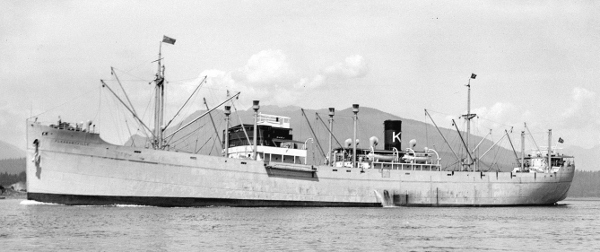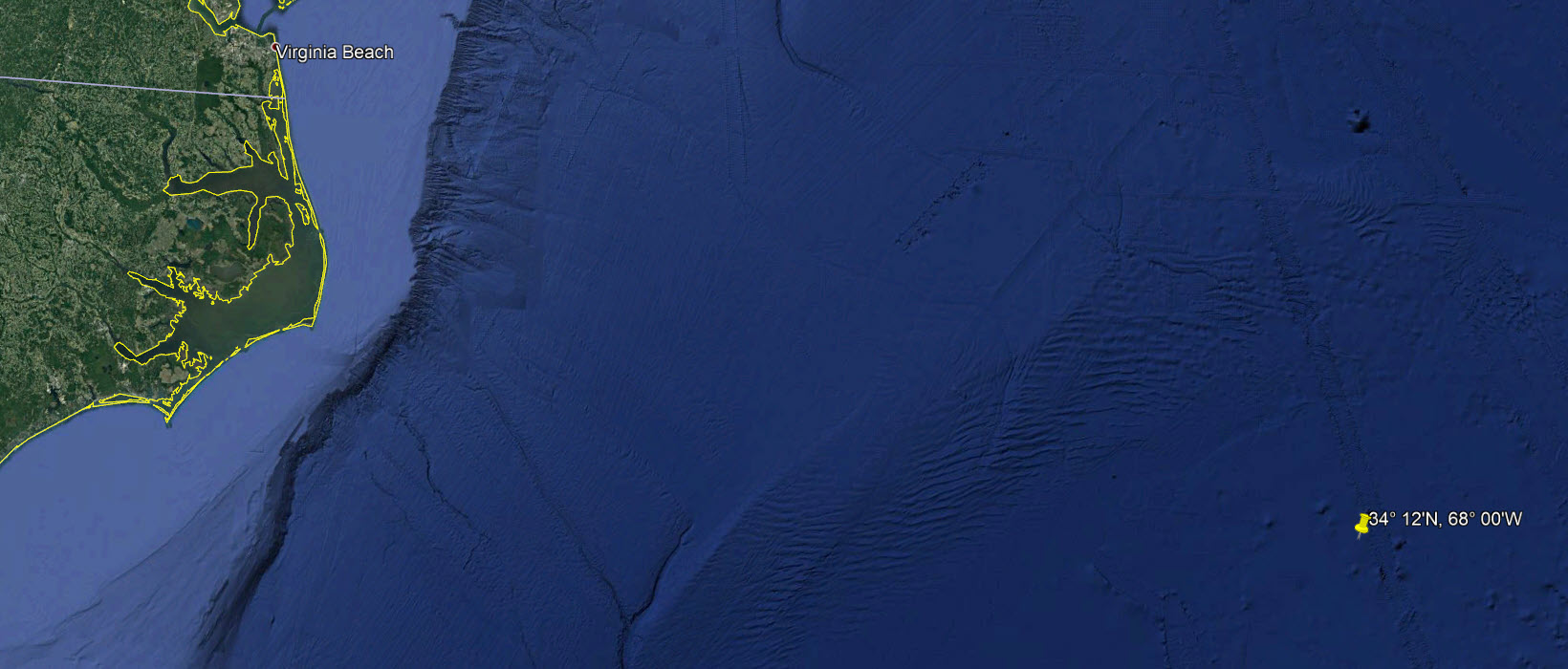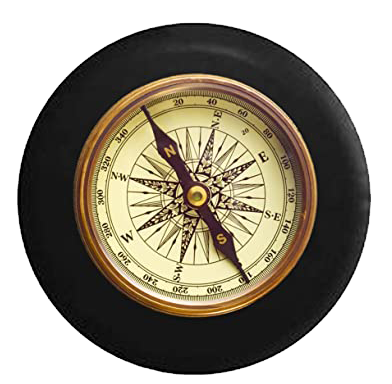
Pleasantville. Photo courtesy of the City of Vancouver Archive CVA 447-2562.
The Sinking of the Pleasantville:
Pleasantville was built in 1929. At the time the owners were Skibs A/S Mandeville and was managed by A.F. Klaveness & Company D/S A/S of Oslo. Ownership was transferred in April 1940 to the Norwegian Shipping & Trade Mission (NortaShip). After the transfer, she spent time in the Pacific Ocean traveling between Singapore, the Philippines, San Fransico, Indonesia, Seattle, Vancouver, and Tacoma. Then in March of 1942, Pleasantville made the shift to the Atlantic Ocean. Traveling from Columbia via Cape Town to arriving in Trinidad on March 30, 1942. From there Pleasantville traveled to New York on April 10 where it remained for nearly seven weeks.
On June 3, it departed New York and headed for Cape Town and then on to Alexandria, Egypt. Onboard there were 3,000 tons of phosphates, cars, trucks, airplanes in crates sitting on the deck along with two locomotives. The supplies were meant to be used by Allies to fight against General Rommel in North Africa. They were to stop in Cape Town to take on bunkers and food for the crew of 37 and ten passengers (all officers in the U.S. Army). The Pleasantville was well armed with a 4-inch gun, two 50-caliber machine guns, and two 30-caliber machine guns. The crew was predominately Norwegian except for two Mess Boys, Robert Nicolay (British) and John Laxio (Canadian), the Radio Operator, Wallace Stevens (Canadian), and Saloon Boy, Constantin Belios (Greek).
As they left New York, the ship traveled through the Ambrose Channel to the Delaware River. On June 4 it moved from the Delaware River to the Chesapeake Bay where it anchored. It then traveled to Cape Henry where it anchored again. On June 6 at 5:30 AM it departed Cape Henry and headed for Cape Town. The following evening, June 7, the Pleasantville was 190 miles northwest of Bermuda and 375 miles east-southeast of Cape Hatteras.
Captain Wildhagen passed by a Norwegian tanker headed north to New York around noon on June 7. “The crews exchanged greetings, wishing each other safe passage. When the tanker had passed them at a distance of about one mile, the sailors on the Pleasantville, who were still gathered on deck, their eyes moist with thoughts of their compatriots, suddenly heard a powerful detonation.”That evening it was moving along at 12 knots on a smooth sea with a slight breeze blowing out of the southeast. The visibility at dusk was good. The Pleasantville posted two lookouts- one on the bridge and another in the crow's nest. At the wheel was Able Seaman Konrad Sandtorv following the orders of Captain Wildhagen to stop a zigzagging pattern at 7 PM with the plan to resume this pattern at 8 PM.
Meanwhile, the U-135 under orders of Kapitänleutnant Fredrich-Herman Praetorius began to patrol the area west-northwest of Bermuda starting on June 6, 1942. On June 7 at 8:42 PM, U-135 launched a torpedo into the port side of the Pleasantville at cargo holds #2 and #3. The sound was muffled by the phosphate contained in the holds. The strike blew a hole in the port side. Also, the blast broke the mask so no radio signal could be sent. Also, when the first torpedo struck there were no men at the guns. Crewman began to immediately abandon ship in three lifeboats. The Captain's boat had eight crewmen and two U.S. Army passengers. Lifeboat #5 (a motor lifeboat) had 17 men. Lifeboat #2 had 18 men. During the explosion, two men were killed. Third Officer Utseth was killed on the bridge and Able Seaman Magne Hansen while on the lookout on the deck was hit by shrapnel.
The lifeboats were safely away from the ship when U-135 fired a second torpedo into the Pleasantville at 9:02 PM. This torpedo hit closer to the waterline. It was fired from a distance of a quarter-mile away at an angle of 25° from port side aft. This hit went directly into the engine room which was a major strike and sealed Pleasantville's fate. The U-135 pulled close to the lifeboats to question the 45 men. The line of questioning included “What ship?, Where from?, Anybody wounded?, What cargo?, Have you any planes on board? [the answer to this was a deceitful no], Is your captain in the boat?” (again, “No,” a lie). Then Praetorius said “Sorry boys, this is war, we have to do it. Good luck,” or “I wish you good luck.” With that U-135 motored off over the horizon and was last seen at 9:50 pm by the survivors.
There is no clear time as to when the Pleasantville actually sank. However, by 10:30 PM the men began to set sail to the west towards the American mainland. That first night one of the lifeboats became separated from the other two. On the first full day in the lifeboats, June 8, they were fortunate that the sea was calm and the visibility was good. Unfortunately, though no other ships were sighted.
On June 9 at 4:05 PM, the Captain's lifeboat saw the mask and funnel of a ship on the horizon to starboard. At 4:10 PM, the spotted ship turned and headed towards the lifeboat. Then at 4:35 PM the ship, the steamer Chickasaw City pulled alongside the lifeboat. The ship was on its way to Trinidad. At the time of their rescue, the lifeboat was 80 miles west-northwest of where the Pleasantville had been sunk. They arrived safely in the Port of Spain, Trinidad at 11:00 AM on June 18.
The other two lifeboats utilized the one boat's motor to tow the other lifeboat. They used that motor for approximately 13 hours (4:15 AM to 5 PM) on June 8. The following day they started the motor at 10:00 AM and still headed west. At 5:30 PM they noticed two marks on the horizon on the starboard side. They began to motor towards the ship. The ship they spotted was the Polish steamship, Paderewski. By 6:30 PM, they were being lifted onto the ship. The first lifeboat rescued was the motorized boat followed by Lifeboat #3. At the time of their rescue, they were 100 miles west of where the Pleasantville had sunk and 275 miles east-southeast of Cape Hatteras. They landed at Port of Spain, Trinidad on June 11.
THE SHIP'S SPECIFICS:
| Built: 1929 | Sunk: June 7, 1942 |
| Type of Vessel: Motor Merchant | Owner: A.F. Klaveness & Co A/S, Oslo |
| Builder: Burmeister & Wain's Maskin & Skibsbyggeri A/S, Copenhagen | Power: Twin diesel engines |
| Port of registry: Oslo | Dimensions: 391.4' x 55.2' x 24.4' |
| Previous Names: |
LOCATION OF THE SINKING:
Here is the location of the sinking: 34° 12'N, 68° 00'W

LOST CREW MEMBERS :
Total Lost: 2, Survivors: 45
| Last | First | Date of Death | Position | Home | Age |
|---|---|---|---|---|---|
| Hansen | Magne Oliver | June 8, 1942 | Able Seaman | 21 | |
| Utseth | Karl | June 8, 1942 | Third Officer | 51 |
SURVIVING CREW MEMBERS:
A listing of the surviving crew:
| Last | First | Position | DOB | Home | Age |
|---|---|---|---|---|---|
| Åkesen | Håkon | Galley Boy | |||
| Andersen | Albert | Able Seaman | |||
| Andreassen | Alf | Mechanic | |||
| *Anstensen | Olaus Marinius | Repairman | May 6, 1891 | Grorud, Oslo | 51 |
| Belios | Constantin | Motor Merchant | |||
| Berg | Karl | Mechanic | |||
| Brikland | Karl | Mechanic | |||
| Christensen | Jakob | Motor Merchant | |||
| **Dahle | Hans | Able Seaman/Gunner | Sept. 6, 1920 | ||
| Dramstad | Harald | Saloon Boy | |||
| Fosse | Håkon | Mechanic | |||
| Gunnarsen | Nils | Able Seaman | |||
| Hansen | Carl H. | Fourth Engineer Officer | |||
| Ikdal | Jarolf | Cook | |||
| Isdahl | Bernhard | Mechanic | |||
| *** Iversen | Victor Bertram Meidell | Electrician | March 25, 1916 | Lørenskog, Akershus | 26 |
| Jacobsen | Jacob | Able Seaman | |||
| Jensen | Arnt | Chief Engineer Officer | |||
| Jensen | Kåre | Second Officer | |||
| Kleppe | Lars | Boatswain | |||
| Laxio | John | Mess Boy | |||
| Lode | Olaf Olsen | Steward | |||
| Madsen | Thomas | Second Engineer Officer | |||
| Nicolay | Robert | Mess Boy | |||
| Olsen | Olav | Third Engineer Officer | |||
| Rogne | Sverre | Able Seaman | |||
| Rødnes | Kaare | Chief Officer | |||
| Sandtorv | Konrad | Able Seaman | |||
| Stevens | Wallace | Radio Operator | |||
| Sørensen | Erling | Able Seaman | |||
| ****Thorsen | Guttorm | Gunner | |||
| Tindal | Gustav | Mechanic | |||
| Tønnesen | Alf | Able Seaman | |||
| Wadseth | Harald | Carpenter | |||
| Wildhagen | Johan | Master/Captain |
*He was the Fourth Engineer Officer on the Lancing when it was sunk on April 7, 1942, by German U-boat U-552.
**He was an Able Seaman/Gunner on the Olaf Fostenes when it was sunk on Sept. 18, 1942, by German U-boat U-380.
***He was an Electrician on the Tudor when it was sunk on June 19, 1940, by German U-boat U-48.
****He was a Gunner on the Stigstad when it was sunk on Feb. 21, 1943 by German U-boat U-332.
